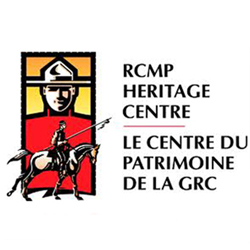Larry Burden’s This Day In The RCMP

The achievements and contributions of the Force have been built upon the individual contributions of many past Veterans. These contributions have largely been forgotten.
Veteran Sgt. Larry Burden ( #35982), who served in “E” Division for 20 years, has spent over ten years researching and summarizing these achievements by specific date. Nearly every day, Larry sends out an email message with a selection from his work in progress manuscript “This Day In The RCMP” to individuals interested in these historical notes.
In an effort to share his research to a large group, Larry has agreed to permit us to develop a webpage on our website. Each webpage will post Larry’s historical notations over the past week.
October 30th
1915– Canada’s 6th Prime Minister, Sir Charles Tupper died at Bexley Heath, Kent England. He was born in Amherst, Nova Scotia and had been a medical doctor prior to entering politics. As Premier of Nova Scotia (1864-1867) he was one of the Fathers of Confederation in 1867. Though he only served as Prime Minister for three months (May 1 to July 8, 1896), he was a highly regarded and respected politician who held many key positions in government. Though his term as Prime Minister of Canada was short his marriage to Lady Frances Tupper lasted 65 years.
1917– 29-year old Acting Major George Randolph Pearkes, VC, PC, CC, CB, DSO, MC, CD (1888-1984) earns the Victoria Cross at the battle of Passchendaele,Belgium.
After serving two years in the Royal Northwest Mounted Police (RNWMP) Constable Pearkes resigned from the RNWMP where he was working in the Yukon to serve in the 5th Canadian Mounted Rifles, Canadian Expeditionary Force during WWI. He was awarded the Victoria Cross while serving in the 5th
His citation for the Victoria Cross stated “On 30 October1917near Passchendaele, Belgium, Major Pearkes, although wounded in the right thigh, continued to lead his men with the utmost gallantry, despite many obstacles. It was entirely due to his determination and fearless personality that he was able to maintain his objective with the small number of men at his command against repeated enemy counter-attacks. His appreciation of the situation and the reports rendered by him were invaluable to his commanding officer. He showed throughout a supreme contempt of danger and wonderful powers of command and leadership.”
He was wounded five times in WWI and received numerous awards and citations.
Pearkes never returned to the Mounted Police. Instead he had an illustrious career as a soldier retiring as a Major General, and then in 1945 he entered politics and was elected to represent Nanaimo, British Columbia and was appointed the Minister of Defence in the Diefenbaker government. In 1967, he was made a Companion of the Order of Canada and in 1968 hebecame the 20thLieutenant Governor of the Province of British Columbia. One of the many honours accorded Pearkes was the naming of a 53’ RCMP Patrol Vessel (MP90) after him in 1973.
He died at the age of 95 in 1984 and was buried at Section 4 – West, Holy Trinity Cemetery, West Saanich, Sidney, Victoria, British Columbia.
1917– Percy James Belcher, the son of #003 / O.101 Inspector Robert Belcher was killed in action at Passchendaele, Belgium. He served as a Captain under his father who was the Commanding Officer of the 138thBattalion of the Canadian Expeditionary Force.
1976– The first woman to be sworn in as a Constable in the RCMP, 19-year old Mary “Heather” Ann Phyllis (Souva) (1955-2013) resigned this day to get married. Phyllis had joined the Force on September 14th, 1974 and resigned two years later to start a family. She died at the age of 58 in Winnipeg. Her ashes were scattered in Scotland.
1987– Constable Renald Gosselin, a member of the Petticodiac NB Detachment is invested as a Serving Brother of the Order of St. John by the Governor General of Canada, Jeanne Sauve at a ceremony held at the Notre Dame Basilica in Ottawa.
1992– While in Iqaluit NWT, Indian Affairs Minister Tom Siddon signs the accord with the Inuit, to finance the creation of a 2.2 m sq km Eastern Arctic territory of Nunavut. With the accord the Inuit people gain clear title to 350,000 sq km, of land and receive $1.15 billion in grants over 14 years.
October 29th
1895– Honour Roll Numbers 19, 22, 23.
#605 Sergeant Colin Campbell Colebrook age 33 was murdered near Kinistino, N.W.T, by Almighty Voice, a Cree Indian prisoner who had escaped from the detachment cells. Subsequently #3040 John R. Kerr age 29 and #3106 Charles H.S. Hockin age 37 were killed while attempting to capture Almighty Voice and his accomplices at Minchinass Hills in 1897.
In October 1895, a twenty-two-year-old Cree Indian known as “Almighty Voice” or “Jean Baptiste” and a companion killed and butchered an Indian Department cow which led to his arrest on the One Arrow Reserve near Batoche, Northwest Territories (now Saskatchewan). The offence itself was not considered that serious, earning Almighty Voice a sentence of one month’s imprisonment. But his escape that night, resulted in a 19-month manhunt and the deaths of three policemen and a civilian.
A few days after the escape, Sgt. Colebrook received a tip from a jealous Native, on the whereabouts of Almighty Voice and a 13-year-old girl called “Small Face”. Colebrook and Scout, Francois Dumont then tracked “Almighty Voice” to Kinistino, fifty miles east of Prince Albert. When they caught up to the fugitive, they found him on foot leading a horse ridden by Small Face. As Sgt. Colebrook approached the pair, Almighty Voice who was armed with a double barrel shotgun yelled out in Cree to “go away”. As Colebrook advanced with one hand in the air, calmly calling out to him to stop, Almighty Voice raised the weapon and shot Colebrook, knocking him from his horse and killing him instantly. Francois Dumont then spurred his horse and rushed back to Duck Lake for help.
Almighty Voice went into hiding and all attempts to locate him failed, in spite of the fact that a $500 reward was offered for information. It was later discovered that he had been hiding out at his mother’s home on the One Arrow Reserve, living for several months in a dugout, accessed by a tunnel from under his mother’s bed.
On May 28th, 1897, Corporal Bowridge and Scout Napoleon Venne were investigating another case of steer killing and encountered Almighty Voice and two other Indians. In the shootout, Scout Venne was seriously wounded. The pair rushed back to Duck Lake to advise the detachment of the location of Almighty Voice.
The subsequent search lead by Inspector John B. Allen and Sergeant C.C. Raven and eleven men culminated in a standoff at a heavily wooded bluff, at Minchinass, 17 miles from Duck Lake. Fearing that Almighty Voice and his accomplices “Going-up-in-the-Sky” and “Little Salteaux” would escape again, the policemen charged into the woods. In the barrage of gunfire Inspector Allen was shot in the arm, Sergeant Raven was shot in the thigh and Corporal Charles Hockin took a bullet in the lung. As Hocking lay bleeding, Constables John R. Kerr and Andrew O’Kelly rushed the fugitives and Kerr was shot in the heart and killed instantly. Hockin was pulled from the battlefield but he died the next morning.
At sundown the squad of men pulled back and kept the area surrounded and waited for 26 additional reinforcements armed with two cannons. At dawn the area was raked by the seven and nine-pound guns and after some sporadic gunfire from the fugitives were found dead lying in a pit.
Sgt. Colebrook was born in London England, and had joined the NWMP at Fort Qu’Appelle, when he was nineteen years old. He had 14 years service when he was killed. #3106, Corporal Charles Hockin had been a Captain in the Imperial Service in England and was the son of a British Admiral. Canadian born #3040, Constable John Kerr was from Barryville Ontario where he had worked as a farmer prior to joining the Mounted Police. All three men were buried in the police plot at the St. Mary’s Church near Prince Albert, Saskatchewan.
1923– The leader of Russian Doukhobor sect, Peter ‘The Lordly’ Verigin was killed by a bomb that had been planted in the railroad coach he was traveling in.
1964– Retired Superintendent Henry Asbjørn Larsen the captain of the RCMP Schooner St. Roch, died after a brief illness. He was buried in the R.C.M.P. cemetery at Regina, Saskatchewan.
At approximately 8:30 pm S/Sgt. Gillespie was contacted by the Whitehorse Tower advising him that a Cessna 172 was lost in a snowstorm, somewhere between Watson Lake and Whitehorse Yukon. The plane became lost, when its radio compass failed, so the pilot, Mr. Doug Schildwatcher climbed to 13,500 feet and requested assistance from the Whitehorse Airfield. By 9:15pm Staff Sergeant Gillespie accompanied by Cpl. Gabb, was airborne in the RCMP airplane CF-MPL and in radio contact with Schildwatcher. Using a VHF direction finder, Gillespie located the Cessna, and then turned on his landing lights, which reflected off of the snow, providing a visual beacon for Mr. Schildwatcher. With the RCMP plane as a guide, the Cessna was successfully escorted back to Whitehorse, preventing an inevitable crash and saving the lives of the pilot and his three passengers.
1976– Air Division pilot #21932 Staff Sergeant Dale Gillespie earned a Commanding Officer’s Commendation for rescuing a lost pilot.
Constables #38419 Lee Anne Gregor and #43398 Mark N. Plessis encountered the fugitives as they entered the town of Creston and began a criminal pursuit. During the chase the fugitives pointed a machine gun at the police and were eventually boxed in on a dead-end street. The passenger armed with the machinegun jumped out of the car and threatened to shoot the constables. The pair remained calm and the gunman fled into the bush. The driver was arrested at the scene and was found to be in possession of a live grenade. The gunman was arrested the following day. In recognition of their bravery, and calm actions, both constables were awarded the Commanding Officer’s Commendation.
1991– Canada Customs personnel and four civilians were taken hostage and locked in a room, by two heavily armed Americans at the Rykerts border crossing in British Columbia. The prisoners managed to escape and called the Creston Detachment to report the crime.
October 28th
1888– Nellie Webb’s House of Prostitution in Edmonton Alberta was disrupted when two drunken off duty Mounties attempted to force their way into the establishment. Not the kind of woman to be pushed around by anyone, Nellie grabbed her trusty shotgun and shot one of the members in the thigh. She was subsequently arrested and charged.
1914– During the Great War the Canadian Government War Cabinet orders the registration of all “alien enemies,” living in Canada particularly Austrians and Germans. Included in the cabinet order is the direction for establishment of ‘concentration camps’ to house internees and their families. The detainees are required to work by performing task such as clearing bush and cutting lumber in national parks.
1938– While unmooring a dory from the Jetty at H.M.C. Dockyard in Halifax Nova Scotia, #12296 Charles H. S. Graham a Marine Section cook accidentally capsized the boat and fell into the frigid water. Fortunately for him #12318 Able Seaman R.O. Newman, saw his mate, a non-swimmer, struggling in the water. Newman dove into the harbour fully clothed and swam to Graham’s location but by the time he arrived, he had gone under. Constable Newman then swam to the bottom and retrieved Graham’s body and brought him to the surface and revived him.
On Jan 23rd, 1939 Able Seaman Newman was awarded the parchment of the Royal Canadian Humane Society. He retired from the RCMP as a Staff Sergeant in 1963.
1954– Henry Asbjorn Larsen 1899-1964 and the crew of RCMP patrol vessel ‘St. Roch arrives in Vancouver completing the last voyage of the first ship to circumnavigated North America. The St. Roch eventually becomes the focal point of the Maritime museum in Vancouver.
1967– Two constables in Kitimat, BC responded to a complaint that Siegfried Newitsch had threatened a tenant. When they arrived on scene #22148 / O.1370 Douglas Ewing and #23865 Brian Mitchell were confronted by Newitsch who was armed with a rifle. Constable Mitchell was sent for help while Ewing calmly talked to the gunman and waited until he was distracted. When the opportunity presented itself Constable Ewing jumped Newitsch and wrestled him for the rifle. While they were wrestling for control of the gun, back-up arrived, and the policemen subdued the suspect. In recognition of their bravery they received commendations.
1970– #S/160 Special Constable Lazarus Kyak of Pond Inlet, Numavut is invested an Officer of the Order of Canada in recognition of his three decades of service to the Inuit as a special constable in the RCMP.
1970– Honour Roll Number 143.
#15190 Sgt. James Aldridge O’Malley age 41 drowned in the Kettle River near Gillam, Manitoba, when his boat capsized, while searching for the victim a drowning.
In October 1970, a civilian had drowned in Kettle River, and after a month of searching a line boom that had been constructed downstream to try and catch the body. A rope had been strung across the river so that the boom could be checked on a regular basis by personnel pulling themselves along in a boat.
On this date #15190 Sergeant James A. O’Malley and #27235 Constable J.G. Eichenlaub went to the river to check the boom, and as they proceeded across the river the current capsized their boat and both men wearing heavy clothing and rain slickers were thrown into the swift flowing river. Constable Eichenlaub managed to cling to boom until he was rescued, but Sergeant O’Mally was pulled under by the current and drowned. Extensive searches were conducted using dragging equipment and a helicopter, but his body was not found for five years.
In July 1975 his skeletal remains were located and identified by dental records. His remains were interred at the RCMP cemetery in Regina after a formal funeral was held at the RCMP Chapel.
James Aldridge O’Malley had been in the RCMP for 22 years and served in seventeen different locations throughout Yukon, the Northwest Territories, Ontario, and Manitoba. He left behind his wife Marjorie and three young children. In 1988 his only son, Michael John O’Malley was sworn in to the RCMP as #39559 and in August 2005 was commissioned as #O.2270 as an Inspector.
1975– Honour Roll Number 151.
#25163 Constable John Brian Baldwinson age 29 was killed in a police motor vehicle accident, in Surrey BC.
At 1:35 am, eight-year veteran, Constabe John Baldwinson was working in plain clothes and driving in an unmarked police car south on the Pacific Highway in Surrey, when he passed another police car driven by #28553 Darrel Graves. Suddenly his car disappeared in a cloud smoke and sparks as it careened out of control into a drainage ditch and a pile of steel pipes as he was thrown some 30 feet through air. He was transported to hospital in New Westminster but was pronounced dead on arrival.
Investigation into the crash revealed that he had hit a horse that had escaped from its pasture and wandered onto the highway. The force of the impact sent the horse through the windshield into Constable Baldwinson and through to the back window.
Constable John Brian Baldwinson was buried at Valleyview Cemetery in Toronto Ontario. He had a wife and two young children.
1977– Prime MinisterPierre Elliott Trudeau confirms to the House of Commons that members of the RCMP entered a Montreal office in 1973 without a warrant to copy the membership lists of the Parti Québécois.
1981– The first of two Medals of Bravery is earned by #34680 Constable Thomas Richard Hansen, for his part in rescuing a girl from submerged car near Squamish, BC.
In the early morning hours of October 28th, 1981, an 18-metre section of the “M” Creek Bridge, on the Sea To Sky Highway near Squamish was destroyed by a rockslide because of several days of continuous rain. Before emergency services could respond to the scene, four vehicles plunged over the edge of the washed-out road and careened into the creek bed below. All but one of the vehicles was swept down the creek and into several hundred feet of water of the adjacent fiord.
Shortly afterwards Cst. Thomas Hansen, a member of the Squamish Detachment, and Lt. Gary Robson of the Squamish Fire Department arrived on the scene and saw an overturned van in the creek. It was nearly covered in mud and has a large boulder nearly one-third the size of the vehicle, lying on top of it.
Armed with flashlights Cst. Hansen and Lt. Robson waded into the rushing water and deep mud to check for survivors and heard faint cries for help from inside the van. Unable to pry open the door, Lt. Robson cut through layers of metal and plywood to create a small opening into the van. Inside he found a sixteen-year-old girl who was nearly submerged in mud and debris. Despite the fact that another slide could occur at any moment and sweep the vehicle into the sea, Lt. Robson entered the van in an attempt to dismantle a fridge that was preventing the girls escape. When Lt. Robson realized he could not free the victim because she was trapped, Cst. Hansen entered the vehicle and, submerged himself in the mud, to free her ankle. Then the two rescuers pulled the exhausted girl from the van and moved her to a waiting ambulance. On December 9, 1983 both men were awarded the Medal of Bravery.
On November 21, 1988 Constable Thomas Richard Hansen MB earned his second Medal of Bravery.
In 2002 Staff Sergeant Hansen retired from the RCMP after 25 years service.


 October 29, 2019
October 29, 2019 






